#adolfo natalini
Text

Bahnhof Apotheke (1976-79) in Lübbecke, Germany, by Adolfo Natalini of Superstudio
#1970s#pharmacy#postmodernism#postmodern#architecture#germany#architektur#adolfo natalini#superstudio
283 notes
·
View notes
Photo




In the 1960's an Italian collective named Superstudio became famous for montages of gridded megastructures in existing environments. These images were very seductive, but were meant as a criticism, not affirmation, of modernism. Adolfo Natalini, who died two years ago, subsequently had an extensive practice across Europe that resulted in contextual, yet modern, buildings that reinforced the urban fabric.
3 notes
·
View notes
Photo

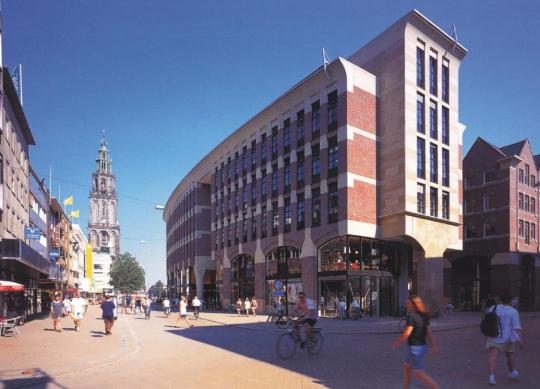
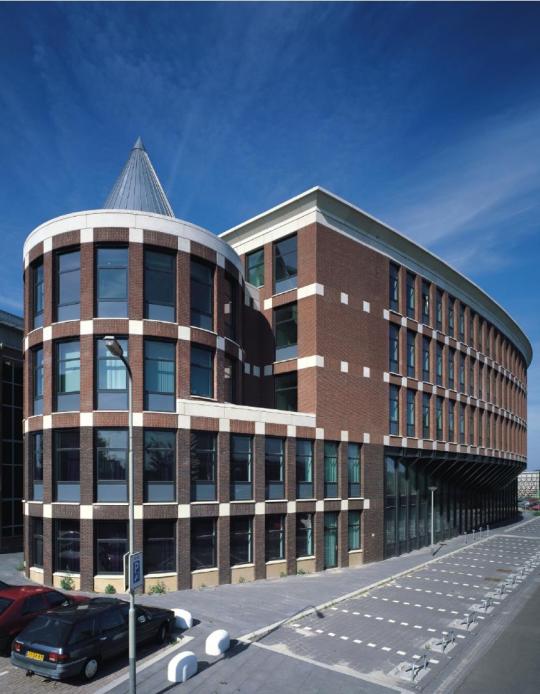
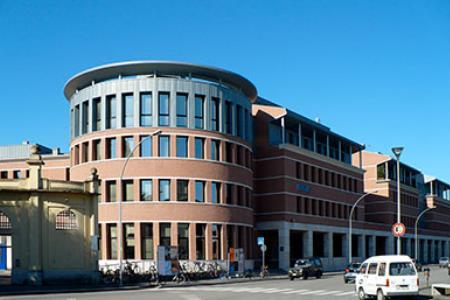
In the 1960's an Italian collective named Superstudio became famous for montages of gridded megastructures in existing environments. These images were very seductive, but were meant as a criticism, not affirmation, of modernism. Adolfo Natalini, who died two years ago, subsequently had an extensive practice across Europe that resulted in contextual, yet modern, buildings that reinforced the urban fabric.
0 notes
Photo

The Continuous Monument: On the River, project (Perspective) by Superstudio, Cristiano Toraldo di Francia, Gian Piero Frassinelli, Alessandro Magris, Roberto Magris, Adolfo Natalini, 1969
123 notes
·
View notes
Text
Gli appuntamenti di Triennale Milano
Gli appuntamenti di Triennale Milano
16 gennaio
11.00 – 13.00 Press Preview | Giulia Mangione. The Fall. In collaborazione con Comune di Reggio Emilia – Giovane Fotografia Italiana | Premio Luigi Ghirri Anteprima stampa della mostra di Giulia Mangione, vincitrice di Giovane Fotografia Italiana | Premio Luigi Ghirri 2023. Con il progetto The Fall presenta la sua ricerca fotografica dedicata all'esplorazione dei miti e credenze attorno al tema dell'Apocalisse e alla fine del mondo.
11.00 Conferenza stampa | Programma 2024 di Volvo Studio Milano. Presso Volvo Studio Milano. RSVP: [email protected] alla stampa della terza edizione di Esplorazioni, un programma di 4 appuntamenti, in partnership con Triennale Milano, dedicato alla scena musicale e coreografica italiana più originale.
18.00 Presentazione volume | Riccardo Dalisi. La sedia del cece. Ingresso libero previa registrazione: triennale.org
Presentazione del libro Riccardo Dalisi. La sedia del cece a cura di Gabriele Neri, edito da Corraini. Architetto, designer e artista, all'inizio degli anni Settanta Riccardo Dalisi incoraggiava i ragazzi di strada del Rione Traiano a Napoli a progettare piccoli arredi ed elementi architettonici, utilizzando materiali semplici e di "design ultrapoverissimo" come legno, spago e fili di metallo. La sedia del cece è l'opera di una bambina, Rosa, sulla cui interpretazione si cimentarono con disegni diversi artisti e intellettuali, tra cui Gae Aulenti, Joseph Beuys, Giancarlo De Carlo, Umberto Eco, Gian Piero Frassinelli, Hans Hollein, Ugo La Pietra, Enzo Mari, Alessandro Mendini, Bruno Munari, Adolfo Natalini, Paolo Portoghesi, Franco Purini, Franco Raggi, Aldo Rossi, Ettore Sottsass, Andy Warhol, ecc. Insieme al curatore del volume Gabriele Neri intervengono: Stefano Boeri, Presidente Triennale Milano; Lorenza Baroncelli, direttrice del Dipartimento di Architettura del MAXXI; i designer e architetti Paolo Deganello, Ugo La Pietra e Franco Raggi; Fulvio Irace, Professore Emerito del Politecnico di Milano. Sarà presente Anna Maria Laville, Presidente Archivio Riccardo Dalisi.
17 gennaio
10.00 Triennale Radio Show. Evento online. Proseguono gli appuntamenti radiofonici in collaborazione con Radio Raheem. Host della trasmissione Damiano Gullì, curatore per Arte contemporanea e Public program di Triennale Milano.
18.00 Presentazione volume | Athena. Le presenze femminili delle Biennali/Triennali di Monza/Milano. 1923–1940. Ingresso libero previa registrazione: triennale.org. Presentazione del libro di Anty Pansera e Mariateresa Chirico. Tra il 1923 e il 1940, prima con cadenza biennale e poi triennale, si tengono presso la Villa Reale di Monza e la Triennale di Milano una serie di esposizioni che già contengono il primo nucleo di quel design destinato ad affermarsi nel dopoguerra. Scopo del libro è guidare il lettore in un viaggio attraverso le sale delle esposizioni soffermandosi sulle presenze femminili che, in veste di artiere, pittrici, scultrici e architette offrirono il loro contributo per valorizzare i saperi femminili. Introduce l'incontro Carla Morogallo, Direttrice Generale di Triennale Milano. Intervengono le autrici del libro Anty Pansera, critica e storica del design, e Mariateresa Chirico, storica dell'arte, insieme a Paola Cordera, Politecnico di Milano, scuola del Design; Marialaura Rossiello Irvine, Studio Irvine. Modera Marco Sammicheli, Direttore del Museo del Design Italiano di Triennale Milano.
18 gennaio
18.30 Visita guidata | Ron Mueck. Visita guidata a pagamento, per maggiori informazioni: triennale.org. Triennale propone una visita guidata per scoprire il lavoro dello scultore australiano Ron Mueck, le cui opere, realiste eppure misteriose, creano immediata empatia con il visitatore. Il percorso espositivo si compone di sei sculture e comprende l'installazione monumentale Mass del 2017, proveniente dalla collezione della National Gallery of Victoria, Melbourne, ed esposta in Europa per la prima volta. L'installazione si presenta al pubblico come un'esperienza fisica, oltre che visiva, composta da cento enormi sculture a forma di teschio umano, simbolo iconografico inesauribile. La mostra presenta anche nuovi lavori che illustrano l'evoluzione nella pratica scultorea di Mueck e opere simbolo della sua carriera appartenenti alla collezione di Fondation Cartier.
18.30 Incontro | Responsabilità sociale e culturale d'impresa. Ingresso libero previa registrazione: triennale.org. Una tavola rotonda, organizzata in collaborazione con Associazione Arte Continua e Doppiozero, con lo scopo di portare l'attenzione sulla necessità sia di promuovere l'arte pubblica – coinvolgendo artisti che appartengono alla comunità internazionale dell'arte – sia di interagire con la pubblica amministrazione e le organizzazioni sociali per favorire un miglioramento della vita negli spazi urbani abitati dalle classi sociali più svantaggiate. Intervengono: Stefano Boeri, Presidente di Triennale Milano; Michele Coppola, Executive Director Arte Cultura e Beni Storici e Direttore delle Gallerie d'Italia di Intesa Sanpaolo; Michele Crisostomo, avvocato già Presidente Enel; Mario Cristiani, Presidente di Associazione Arte Continua; Giovanna Forlanelli, Presidente della Fondazione Rovati; Francesca Lavazza, Board Member Lavazza Group e Presidente Castello di Rivoli Museo d'Arte Contemporanea.
19 gennaio
18.30 Incontro | Alberto Meda e Arcangelo Sassolino: una conversazione. Ingresso libero previa registrazione: triennale.org
La passione per la coazione, per il potenziamento del materiale combinato artificialmente con altri, la predilezione per il movimento che genera nuove condizioni d'equilibrio fanno di Alberto Meda un ingegnere positivista che ha portato nuove esperienze nel campo del design. Le incursioni nel mondo dell'ingegneria, la conoscenza dei materiali, un passato nel campo del design fanno della ricerca artistica di Arcangelo Sassolino un percorso sorprendente. Le loro pratiche a confronto in una conversazione tra i due autori animata dalla storica dell'ingegneria Tullia Iori e dal Direttore del Museo del Design Italiano, Marco Sammicheli. Saluti istituzionali di Damiano Gullì, curatore per Arte contemporanea e Public program, e Irene Sassetti, Consiglio Nazionale degli Ingegneri.
18.30 Incontro | This Topic: vivere in una società abilista. Ingresso libero previa registrazione: triennale.org. Triennale Milano presenta l'incontro This Topic: vivere in una società abilista con Charlotte Puiseux, attivista e ricercatrice francese che dedica il suo impegno alla lotta per i diritti di tutte e tutti in una società abilista. Nel suo saggio autobiografico De chair et de fer: Vivre et lutter dans une société validiste (Francia, 2022) ripercorre la storia di violenza e discriminazione che ha ereditato e decifra il sistema ideologico che ne è alla base: il validismo. Puiseux ci fa riflettere su come le persone con disabilità possano rivendicare la loro storia e trasformare le proprie identità in strumenti di lotta per l'emancipazione. L'autrice, in collegamento dalla Francia, è in dialogo con Tiziano Colombi, co-fondatore di DiverCity, magazine europeo di inclusione ed equità.
18.30 Visita guidata | Pittura italiana oggi
Visita guidata a pagamento, per maggiori informazioni: triennale.org. Triennale Milano propone una visita guidata della mostra Pittura italiana oggi, che riunisce il lavoro di 120 tra i più interessanti artisti e artiste italiani, nati tra il 1960 e il 2000. In mostra sono stati individuati singoli exempla rappresentativi, attraverso un'opera per artista, realizzata tra il 2020 e il 2023, in grado di offrire sguardi trasversali, letture e interpretazioni originali della nostra contemporaneità.
Dal 19 al 21 gennaio
Fuori Asse Focus 2024 | AI CONFINI DEL CIRCO. Giunto alla sua terza edizione, Fuori Asse Focus 2024 | AI CONFINI DEL CIRCO è una selezione di quattro spettacoli di circo contemporaneo programmati da Quattrox4 all'interno del nostro teatro, accompagnati da due incontri critici e una tavola rotonda sulla critica nel circo contemporaneo.
19 gennaio
- 20.00 Performance | LONTANO + INSTANTE - Marica Marinoni / Juan Ignacio Tula
Performance a pagamento, per maggiori informazioni: triennale.org
20 gennaio
- 17.00 Performance | ONLY BONES v1.6 - Marina Cherry
Performance a pagamento, per maggiori informazioni: triennale.org
- 18.00 Incontro | (PER) FORMARE PAROLE - Marica Marinoni e Juan Ignacio Tula
Ingresso libero previa registrazione: triennale.org
- 20.00 Spettacolo | C'EST L'HIVER, LE CIEL EST BLEU - Amanda Homa, Idriss Roca | Compagnie Diagonale du Vide
Spettacolo a pagamento, per maggiori informazioni: triennale.org
21 gennaio
- 11.30 Incontro | La critica che non c'è: mancanze, strumenti, possibilità per un discorso metacircense. Ingresso libero previa registrazione: triennale.org
- 15.30 Spettacolo | C'EST L'HIVER, LE CIEL EST BLEU - Amanda Homa, Idriss Roca | Compagnie Diagonale du Vide Spettacolo a pagamento, per maggiori informazioni: triennale.org
- 17.00 Performance | ONLY BONES v1.6 - Marina Cherry. Performance a pagamento, per maggiori informazioni: triennale.org
- 18:00 Incontro | (PER) FORMARE PAROLE - Amanda Homa, Idriss Roca e Marina Cherry. Ingresso libero previa registrazione: triennale.org
- 19.30 Performance | LONTANO + INSTANTE - Marica Marinoni / Juan Ignacio Tula. Performance a pagamento, per maggiori informazioni: triennale.org
20 gennaio
12.00 Visita guidata | Museo del Design Italiano. Visita guidata a pagamento, per maggiori informazioni: triennale.org. Triennale propone una serie di visite guidate alla scoperta delle sue mostre e della sua collezione permanente. Il Museo del Design Italiano presenta la sua nuova selezione di oggetti e il suo nuovo allestimento attraversando i cento anni della storia di Triennale, con oltre 300 pezzi scelti tra i 1.600 che compongono le collezioni dell'istituzione e altri in prestito da importanti collezioni private.
15.30 Laboratorio | La pittura entra in gioco Laboratorio a pagamento, per maggiori informazioni: triennale.org. Il laboratorio, a cura di studio òbelo, è organizzato nell'ambito della mostra Pittura italiana oggi. Consiste in una serie di giochi da tavolo, da terra e da parete nei quali la pittura diventa un momento di relazione, interazione e collaborazione. Bambini e accompagnatori sono invitati a provare liberamente le postazioni distribuite nello spazio, sperimentando diversi modi di osservare il mondo e di dargli forma con il colore.
18.30 Visita guidata | Ron Mueck. Visita guidata a pagamento, per maggiori informazioni: triennale.org
21 gennaio
12.00 Visita guidata | Museo del Design Italiano. Visita guidata a pagamento, per maggiori informazioni: triennale.org
15.30 Laboratorio | I Portatori di Luce: i fiori dell'Aurora. Laboratorio a pagamento, per maggiori informazioni: triennale.org
A cura dell'artista Stefano Fiorina, I Portatori di Luce è un progetto che nasce nella fantasia per diffondersi nel mondo reale. Dopo una visita guidata per famiglie alla mostra sullo scultore australiano Ron Mueck i partecipanti, attraverso un workshop esperienziale, sono invitati a immergersi nell'immaginario dei "Portatori di Luce" per scoprire la flora di questo mondo fantastico. Con piante e fiori, tavole botaniche e proiezioni video viene raccontata la storia e il potere di ciascun fiore. Durante il laboratorio ogni bambino realizza il proprio fiore dell'Aurora che si attiverà con la luce e che potrà portare a casa al termine dell'esperienza.
18.30 Visita guidata | Pittura italiana oggi. Visita guidata a pagamento, per maggiori informazioni: triennale.org...
#notizie #news #breakingnews #cronaca #politica #eventi #sport #moda
Read the full article
0 notes
Text
Mirror, Mirror
00 WHAT DO WE WANT- a nice space for contracting - an architecture that does not universalize - but also an architecture that is not specific to one culture - whilst still not becoming generic or undefined
Question: but how can we include all cultures, whilst not becoming universal? How can we embrace everything without just neutralizing it? isn't the utopia of quantity one where nothing matters anymore?
let us first analyze a countermodel of modernism, to understand a little better.
01 A MONUMENT FOR THE POSTHUMAN
continuous monumentthe continuous momunemt is the ultimate desexualization of architecture, as it plays to the limit the modern dichotomy of nature and artificiality, where the human is natural and architecture is functional and artificial, thus without sex. it criqitues the pre-modern utopia of quality being reduced to a utopia of quantity, where everything goes but nothing matters, a turn which in itself negates past and future. the continuous monuments grid functions as an edifice for a posthuman nature, where everything is generalized, homogenized and neutralized
Adolfo Natalini, one of Superstudio’s founders, commented:
“If architecture is merely the codifying of bourgeois model of ownership and society, then we must reject architecture; if architecture and town planning is merely the formalization of present unjust social divisions, then we must reject town planning and its cities. . . until all design activities are aimed towards meeting primary needs. Until then, design must disappear. We can live without architecture."
Question: but how does the continuous monument critique that? isn't it just a cool image? I kinda like it….
a) ordering space the continuous monument orders space into a cartesian grid and thus mirrors the imperial state act of organizing the territory so as to control it. The total ordering and rationalizing of space is simultaneously enables the universalizing rule thereover
b) culture the continuous monument is thus against culture, as it imposes a cosmic order on earth, an order where all regionalism disappears and the dirt of the streets is wiped clean. if culture is dirty, blurred and happens within the passing of time, the eternalizing nature of the monument is sharp, clearly defined and hyperreal. its specificity negates the possibility of alternatives and of a chronos that could foster stories.
c) Level of Detail (LOD) (this is the important bit) the continuous monument achieves this reductionism through changing the level of detail of the observer. the way in which modern architecture replaces history is not just by its physical replacement, but by consuming history within itself. similarly to how a colonial politics of space does not seek to replace, but instead subsumes that which goes before. if the monument incorporates all history, but we can't recognize it, then the level of detail has changed. we see only the sharply delineated grid, instead of the blurry reality it replaces.
02 THIS IS HAPPENING
the saudis are currently building the line, which is a physical replica of the continuous monument and therefore easy to critique. It reduced the level of detail of reality down to a single geometric feature. but one a symbolic level, all modern architecture that universalizes, that subsumes history and seeks a cosmic order uses the same vocabulary. How can we reimagine an architecture that does none of these things?
03 LEVEL OF DETAIL - uncertainty principle
If the grid reduces the LOD of the surroundings to a single gesture, then the mirror mantains the complexity it without overwriting it. On a symbolic level, the mirror is our subconscious into which we can gaze, implying the reflection is not just an identical copy, but one which carries a subtext not evident normally. The mirror is thus the negation of the grid: if the grid subsumes history, the mirror reveals it.
The mirror of the port does not necessarily reflect an original image. The mirage's LOD is dependent on the eye of the observer - they see either reality in all its associative blindness or they see a different LOD, giving them a foreign view.
This moment, where the LOD changes creates a moment of uncertainty, of nausea. The eye of the observers subjectivity is thrown into proportion, as their associative conception of reality breaks down. Through this play with LOD, between exact reflection and grid, different levels of consciousness can be created. The level of the highest insight is neither the sharp edged reality not the generic grid - it is somewhere in between.
The uncertainty principle of contemporary documentary pictures: As Steyerl described, it is often the more blurred pictures of reality that evoke a stronger imaginary in the eye of the observer. The closer to reality we get, the less intelligible it becomes. By playing with the zoom, with the blur, we can learn more. This notion begins in the understanding of abstraction from Brechtian theatre, where immersion and hyperreality are replaces by a willing suspension of disbelief. Where the observer chooses to imagine.
04 PORT
The port does all of these things - mirrors the city with a different LOD, leads you into its interior. On the outside, you often would not notice it. It disappears, if you choose not to view it in abstraction. Once inside, you enter halls, milk flows from the cows grazing above. You perform your rituals, within the abstract mirror of the city, of your own past. The rituals are poured in milk. The milk freezes, is cored with a drill and then stored within the walls of reflection for eternity. The milk is a living archive of the impermanent. It archives not the physical - as architecture does - but the immutable. Once you have finished, you leave onto the pastures on the roof. Cows graze. You gaze down onto the city below, foreign and beknown at once.
0 notes
Text
Ciudades imaginarias: arquitectura para hacernos pensar.
La arquitectura radical y el antidiseño plantean proyectos que jamás serán construidos. Estas obras imposibles son, en realidad, mensajes para la sociedad.
La arquitectura imaginaria se fraguó hace medio siglo para rebelarse contra lo establecido. Todavía hoy algunos estudios fantasean con modelos utópicos y distópicos que, en vez de proyectar lugares habitables, cuestionan nuestros modos de vida.
Contesta y rompe con la arquitectura de la razón, la disciplina que edifica espacios prácticos sin contemplar las necesidades ni los deseos de quienes los habitan. De este antidiseño nacen proyectos irrealizables pensados para provocar, criticar, reflexionar y demoler los muros del sistema.
A la cabeza de este movimiento se situó un puñado de jóvenes británicos en 1961. Peter Cook, David Greene y Mike Webb, estudiantes de arquitectura, publicaron una revista alternativa hecha en casa cuyas páginas estaban llenas de dibujos y collages coloristas que ilustraban proyectos meramente hipotéticos y utópicos.
No tenían ningún afán de llevarlos a la práctica: cada plano impracticable era una excusa para pasarlo bien y pensar sobre el arte, la ciudad, la cibernética, los robots y el futuro.
La revista, titulada Archigram (una fusión entre architecture y telegram o aerogramme), llamó la atención de Ron Herron, Dennis Crompton y Warren Chalk, arquitectos experimentados que llevaron el estudio al siguiente nivel: la exposición Living Cities del Institute of Contemporary Arts en 1963.
Así es como Archigram se consagró e hizo historia. Sus más de 900 diseños demenciales anticiparon una arquitectura que llegaría décadas más tarde, con la globalización.


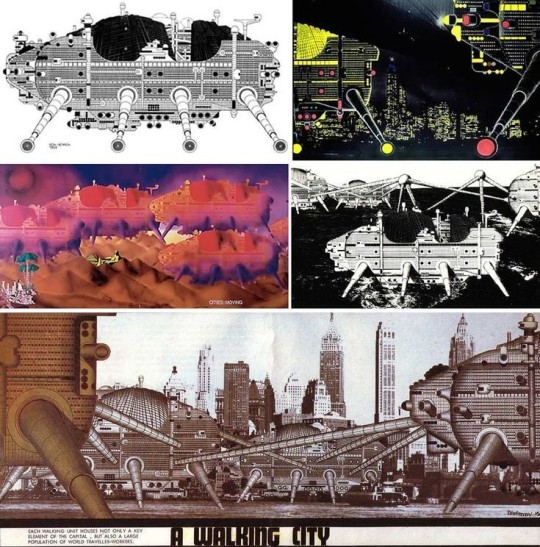


SUPERSTUDIO
La arquitectura radical no se quedó en las islas británicas. En Florencia, los estudiantes italianos Adolfo Natalini y Cristiano Toraldo di Francia fundaron Superstudio en 1966 para combatir el consumismo, la producción desenfrenada, la política y la sociedad de masas utilizando el antidiseño como herramienta de crítica.
Florencia había quedado devastada por una inundación y Superstudio se encaró con las voces que abogaban por borrar la historia de la ciudad y reconstruirla desde cero, olvidando lo que allí había existido antes. El grupo italiano respondió con diseños distópicos, exagerados e irónicos que advertían de un futuro terrible.
Su ansia subversiva se canalizó a través de la ironía y la reducción al absurdo de los principios de la arquitectura moderna. La No-Stop City (1970) de Archizoom teorizaba sobre la desaparición de la arquitectura en un planeta donde la arquitectura lo invadiera todo.
Una ciudad sin límites geográficos, sin centro, sin periferia ni espacios privados que ha devorado a la naturaleza, pero en la que todos los ciudadanos tienen tienen acceso a una tecnología que facilita sus vidas.
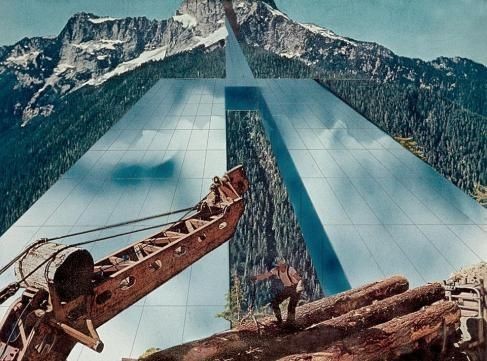
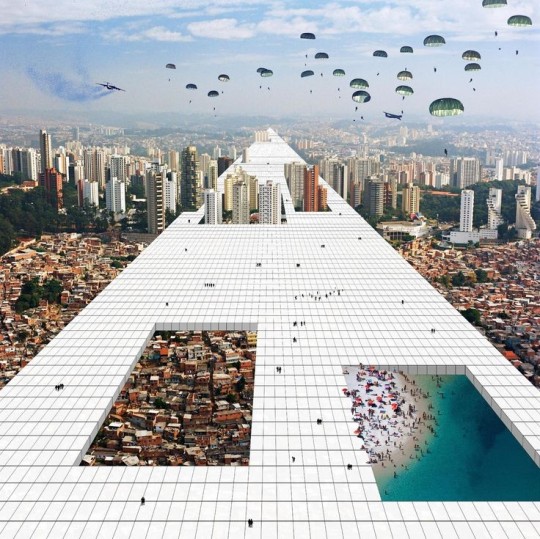
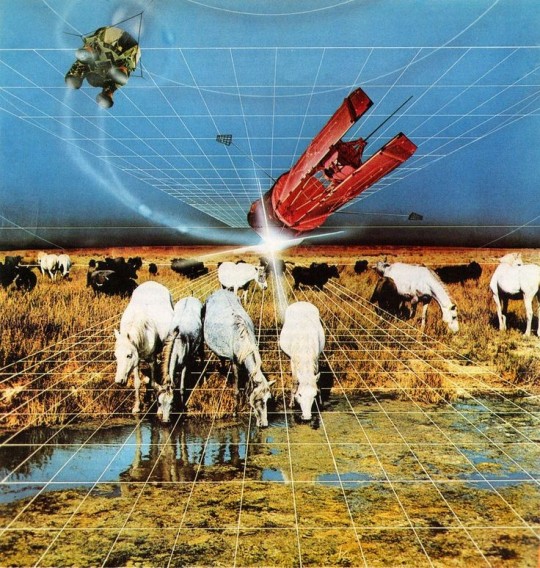
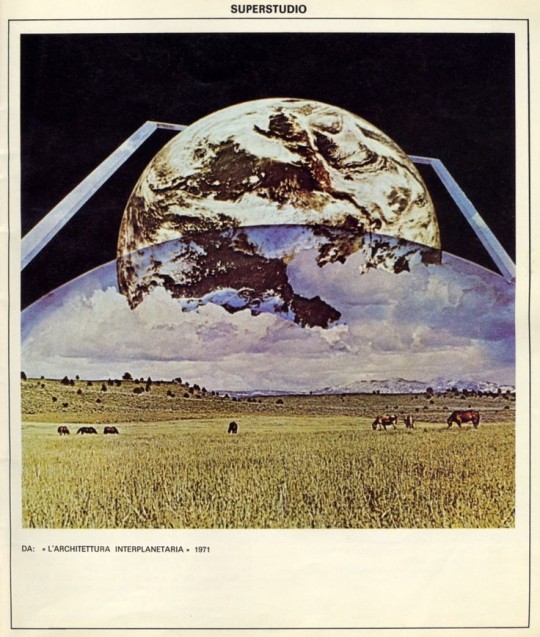

1 note
·
View note
Text
Andrea Zittel: Critical Space

notes from book ;
Zittel has closely observed the contemporary urban ecosystem for past 15 years through interdisciplinary work. Looks at how we perceive ourselves in our home and personal life, and the ideologies we have created in order to balance personal aspirations with the authoritarian logic and power structures. This really reminded me of Georg Baselitz.
'methodological process', artwork comes from acts of questioning reality and formulating answers.
"how people can believe in something even though some deper more rational part of them is telling them that it may not exactly be true. One of the reasons that I am fascinated by Modernism is that it was the last era of great faith, people still really believed. Faith seems to be a natural human trait, and although I don't want to embarrass myself or be overly naive, I still like to indulge in the act of belief now and then." (Zittel p.19)
Zittel's illustration of functional objects and the objects themselves elaborates on the notions of 'function' and 'usage' : how do we "use" art?
"if design is merely an inducement to consume, then we must reject design" (Adolfo Natalini, p. 26)
Conversation among Andrea Zittel, Beatriz Colomina and Mark Wigley while driving through Joshua Tree National Park
B :"What is the difference in your mind between this form of art practice as farming [in-situ, architectural pieces that intersect with landscape] and the inventions of ordinary people?
A: "Well, I would like to say that I don't think that there is such a difference, but I guess that the thing that bothers me about southern California suburban culture is that we seem to be caught in such a cycle of endless consumption. I was listening to Jerry Brown once, and he was describing the difference between a citizen and a consumer. And he said a consume is only able to pick from a few selections that are offered to them, and a citizen is somebody who can come up with creative solutions outside of those few options"
A: "I found a floor once, tiles somebody had ripped from a bathroom, so I tried putting them back together. And while I was doing that, I actually started to think a lot about the difference between a creative gesture and a non-creative gesture. I decided that all gestures were creative, because you always have to make a decision at some point.
A: "I've always loved the word 'designer' because it is such a creation of modernity. It didn't exist at first- it appeared out of nowhere. I also love the ambiguity of the word. I mean, sort of a catchall term. I don't really consider myself a designer, but I think my work is about design, because it concerns interests me almost more than art issues. They're so symptomatic of the time that we live in. I'm not a designer because I don't design for the masses. I don't make products. I design experiments for myself."
A: [on Time Trials project 1999-2000] " The hardest thing with that- and the thing that raises more questions about the nature of art- is that I thought it was successful as an experiment, attached to an unpredictable and extreme experience. But then it was unsuccessful as an artwork, because there was no way to present that experience to an audience. So I became caught up in this web. Where does the art actually exist? Is the art in my subjective experience of this thing or in what the audience perceives?"
0 notes
Photo

Adolfo Natalini, Design for a Villa, 1968
#Adolfo Natalini#architecture#drawing#design#axonometric#design for a villa#house#superstudio#grid#cube#box
145 notes
·
View notes
Quote
By the destruction of objects, we mean the destruction of their attributes of "status" and the connotations imposed by those in power, so that we live with objects (reduced to the condition of neutral and disposable elements) and not for objects.
By the elimination of the city, we mean the elimination of the accumulation of the formal structures of power, the elimination of the city as hierarchy and social model, in search of a new free egalitarian state in which everyone can reach different grades in the development of his possibilities, beginning from equal starting points.
By the end of work, we mean the end of specialized and repetitive work, seen as an alienating activity, foreign to the nature of man; the logical consequence will be a new, revolutionary society in which everyone should find the full development of his possibilities, and in which the principle of "from everyone according to his capacities, to everyone according to his needs" should be put into practice. The construction of a revolutionary society is passing through the phase of radical, concrete criticism of present society, of its way of producing, consuming, living.
Statement by Adolfo Natalini of Superstudio, Italy: The New Domestic Landscape, The Museum of Modern Art, May 26, 1972 - September 11, 1972
#quote#Superstudio#architecture#urbanism#economy#social#work#architectural theory#cities#urban design#art#Italy#experimental architecture#Adolfo Natalini#power#systems
62 notes
·
View notes
Photo
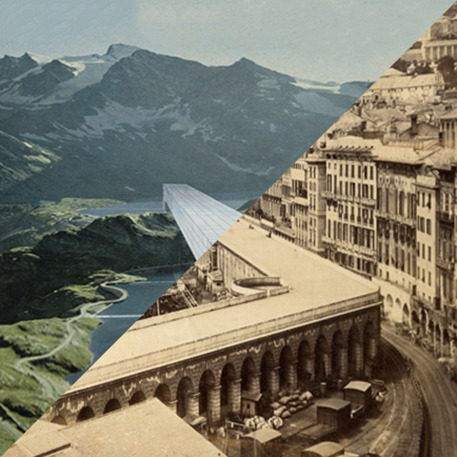
Superstudio, Monumento Continuo, 1969
VS
Ignazio Gardella (senior), Terrazze di marmo, Genoa, Italy, 1835-1844 (demolished in 1886) © Alfred Noack
#superstudio#architecture#cristiano toraldo di francia#adolfo natalini#Gian Piero Frassinelli#architettura radicale#radical architecture#collage#collage art#cut and paste#ignazio gardella senior#ignazio gardella#terrazze di marmo#genova#genoa#italy#italia#alfred noack
37 notes
·
View notes
Photo

Bahnhof Apotheke (1976-79) in Lübbecke, Germany, by Adolfo Natalini of Superstudio
#1970s#pharmacy#postmodernism#postmodern#architecture#germany#architektur#adolfo natalini#superstudio
126 notes
·
View notes
Photo
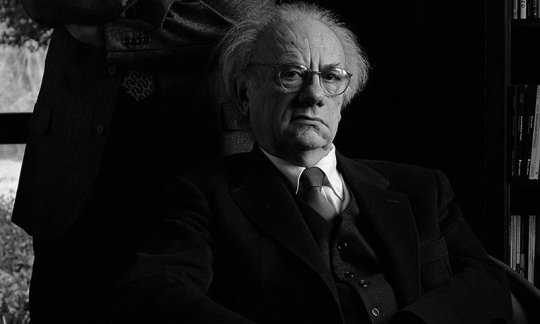
Superstudioのアドルフォ・ナタリーニが逝去 享年78歳 (designboom)
Adolfo Natalini, founder of radical architecture group Superstudio dies aged 78 (designboom)
1 note
·
View note
Photo
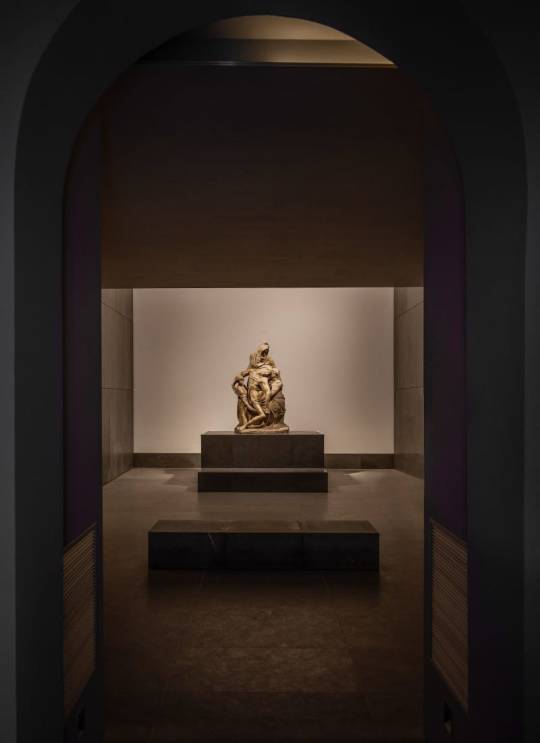
ADOLFO NATALINI - NATALINI ARCHITETTI, GUICCIARDINI E MAGNI ARCHITETTIMUSEO DELL'OPERA DEL DUOMO DI FIRENZE
0 notes

